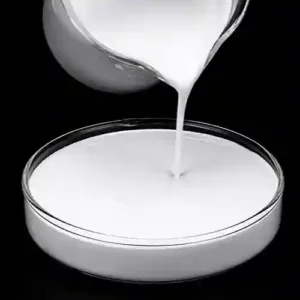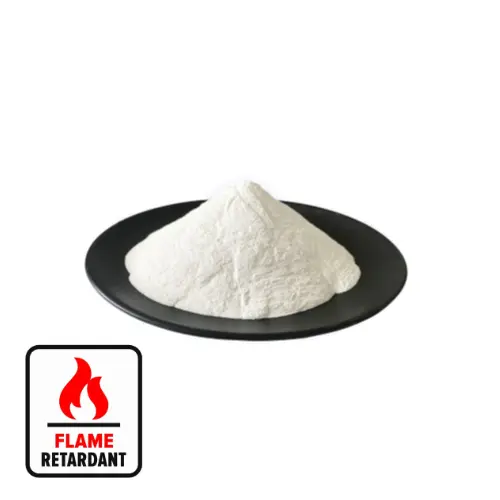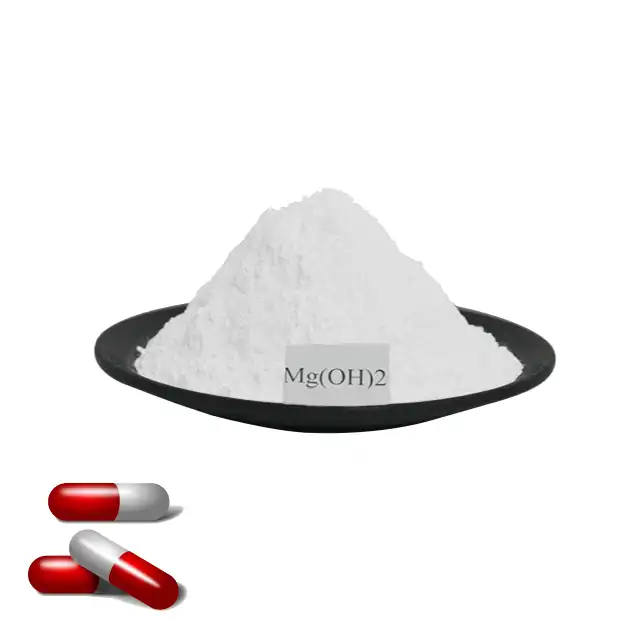The suspension of magnesium hydroxide in water is called magnesium hydroxide slurry. Magnesium hydroxide is a colorless hexagonal crystal or white powder. It is insoluble in water and alcohol, soluble in dilute acid and ammonium salt solution, and the aqueous solution is alkaline. It has a very low solubility in water and is a strong electrolyte. Magnesium hydroxide is a natural mineral brucite. It can be used to make sugar and magnesium oxide, etc. Because magnesium hydroxide is relatively abundant in nature and its chemical properties are similar to aluminum, users began to use magnesium hydroxide to replace aluminum chloride for fragrance products.
Properties
Magnesium hydroxide is a colorless hexagonal crystal or white powder. It is insoluble in water and alcohol, soluble in dilute acid and ammonium salt solution, and the aqueous solution is alkaline. It has a very low solubility in water, but it is a strong electrolyte. The solubility is 0.0009g/100g at 18℃, and Ksp = 1.5 × 10−11.
Like magnesium oxide, it easily absorbs carbon dioxide in the air and gradually forms a basic carbonate with a composition of 5MgO·4CO2·xH2O.
It decomposes into magnesium oxide and water at temperatures above 350°C, but can only be completely dehydrated at temperatures above 1800°C.
Preparation of magnesium hydroxide
The two most important aspects to control in the preparation of magnesium hydroxide are:
(1) Filtration performance. If the magnesium hydroxide slurry has poor sedimentation performance, it will affect the washing and separation operations, resulting in a longer magnesium hydroxide synthesis cycle and affecting the output of magnesium hydroxide; (2) Control of morphology. Because magnesium hydroxide with a regular morphology has a better flame retardant effect, it is necessary to adopt appropriate production methods and process conditions to meet the requirements.
The main production processes of magnesium hydroxide include direct precipitation, magnesium-containing ore grinding, and magnesium oxide hydration.
Direct precipitation method
There are many methods for synthesizing magnesium hydroxide at present, among which the most commonly used method is precipitation, because it is low in price and simple to operate, and it is easy to control the crystal morphology. In the precipitation method, it is mainly salt solution precipitation, usually using a strong base such as ammonia or sodium hydroxide. The most widely used magnesium salts are magnesium chloride, magnesium sulfate and magnesium nitrate, and organic magnesium salts such as magnesium acetate are occasionally used.
The direct precipitation method of ammonia method for preparing magnesium hydroxide is divided into one-step method and continuous precipitation method. The continuous precipitation method realizes the recycling of resources, reduces production costs and ensures the quality of products.
Hydrothermal method
The morphology and size of magnesium hydroxide can be effectively controlled by hydrothermal reaction. The properties of the product mainly depend on the type of precursor magnesium salt, the control of solvent and reaction process temperature; the morphology of the product mainly depends on the pH of the solution and the temperature of the reaction. By adjusting the pH, the morphology of magnesium hydroxide can be synthesized into nano-flowers, needles, flakes and spheres.
The advantage of hydrothermal synthesis is that magnesium hydroxide with a specific surface area greater than 100m2/g can be obtained. The disadvantage is that high temperature and high pressure are used in industry, which is costly.
Sonochemical synthesis method
The sonochemical method uses ultrasonic waves with a frequency range of 20kHz-10MHz to induce the formation and collapse of micelles and produce active sites under high temperature and high pressure. Compared with traditional methods, this method occurs under extreme conditions, which can greatly increase the reaction rate and generate small crystals with more uniform morphology. The characteristic of sonochemical synthesis is that materials of different structural types can be produced by changing the reaction medium.
Sol-gel method
The sol-gel method is to use highly active metal compounds as precursors, mix them in liquid phase, hydrolyze and condense them to generate metal hydroxides. A stable transparent sol is formed, which slowly polymerizes after aging to form a network structure. The solvent is lost during the reaction process to form a gel. The gel is subsequently dried and sintered to prepare nanomaterials.
The reaction process of this method is that the precursor is dispersed and dissolved, hydrolyzed to generate monomers, polymerized to generate sol, and then dried and heat treated to prepare nano magnesium hydroxide materials.
Uses
Magnesium hydroxide is widely used as a flame retardant filler for plastics, resins, rubbers, paints and other materials, as well as an antacid for treating excessive gastric acid, a neutralizer for acidic wastewater, a desulfurizer, a laxative, a deodorant, etc. In addition, it is also used in the electronics industry, medicine, sugar refining and the preparation of other magnesium compounds (such as magnesium sulfate and magnesium oxide).

The reason why magnesium hydroxide has flame retardant properties is that it decomposes above 340°C to generate magnesium oxide and water, absorbing heat from the surface of the burning material. The large amount of water generated has the effect of diluting and isolating the air (oxygen) on the surface of the burning object. The active magnesium oxide solid generated by decomposition is a high temperature resistant substance, which adheres to the surface of the combustible to further prevent combustion. Magnesium hydroxide does not produce corrosive and toxic gases when it decomposes, and it is alkaline, which can absorb and neutralize the acidic gases released during combustion, such as carbon dioxide, sulfur dioxide and nitrogen oxides. The active magnesium oxide generated by decomposition can also absorb harmful gases, smoke and incompletely burned molten residues generated during combustion, eliminate smoke, and stop the process of molten droplets, thereby achieving the purpose of flame retardancy.

Magnesium hydroxide is used as a deodorant because it is relatively abundant in nature and its chemical properties are similar to aluminum. Therefore, in recent years, magnesium hydroxide has begun to replace aluminum chloride in fragrance products on the market.



